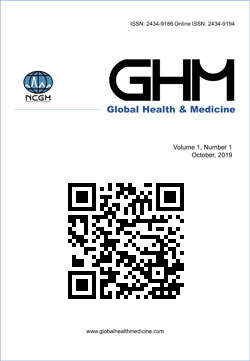Volume 5, Issue 6
Displaying 1-10 of 10 articles from this issue
- |<
- <
- 1
- >
- >|
Review
-
Article type: review-article
2023Volume 5Issue 6 Pages 319-327
Published: December 31, 2023
Released on J-STAGE: January 06, 2024
Advance online publication: October 29, 2023Download PDF (732K)
Original Article
-
Article type: research-article
2023Volume 5Issue 6 Pages 328-335
Published: December 31, 2023
Released on J-STAGE: January 06, 2024
Advance online publication: November 05, 2023Download PDF (1340K) -
Article type: research-article
2023Volume 5Issue 6 Pages 336-344
Published: December 31, 2023
Released on J-STAGE: January 06, 2024
Advance online publication: October 10, 2023Download PDF (946K) -
Article type: research-article
2023Volume 5Issue 6 Pages 345-353
Published: December 31, 2023
Released on J-STAGE: January 06, 2024
Advance online publication: September 29, 2023Download PDF (343K) -
Article type: research-article
2023Volume 5Issue 6 Pages 354-361
Published: December 31, 2023
Released on J-STAGE: January 06, 2024
Advance online publication: October 29, 2023Download PDF (502K)
Brief Report
-
Article type: brief-report
2023Volume 5Issue 6 Pages 362-365
Published: December 31, 2023
Released on J-STAGE: January 06, 2024
Advance online publication: November 27, 2023Download PDF (279K) -
Article type: brief-report
2023Volume 5Issue 6 Pages 366-371
Published: December 31, 2023
Released on J-STAGE: January 06, 2024
Advance online publication: November 15, 2023Download PDF (471K)
Correspondence
-
2023Volume 5Issue 6 Pages 372-376
Published: December 31, 2023
Released on J-STAGE: January 06, 2024
Advance online publication: November 24, 2023Download PDF (276K) -
2023Volume 5Issue 6 Pages 377-380
Published: December 31, 2023
Released on J-STAGE: January 06, 2024
Advance online publication: October 20, 2023Download PDF (456K) -
2023Volume 5Issue 6 Pages 381-384
Published: December 31, 2023
Released on J-STAGE: January 06, 2024
Advance online publication: November 21, 2023Download PDF (502K)
- |<
- <
- 1
- >
- >|
